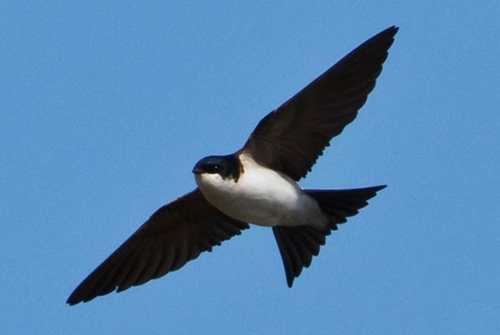
If you read the headlines around the recent Birds of Conservation Concern report, you’d have been rightly worried about the fate of many of our much-loved bird species. One group that is suffering more than most is aerial insectivores – birds that feed by capturing insects in flight, or ‘on the wing’ as it is more commonly known.
The species in this group under most threat are swifts and house martins, both of which have been moved from the Amber to Red list owing to severe population declines of 58% (between 1995 to 2018) and 57% (between 1969 to 2018) respectively. Another aerial insectivore, the barn swallow, has suffered a population decline of 31% between 2009 and 2018.
We know that a lack of traditional nest sites is likely to have an impact on all three species and there has been a concerted effort to protect existing sites and provide artificial nest sites, including encouraging the installation of swift bricks within new housing developments. Each of these species also spends the non-breeding season in the sub-Sahara, which raises questions about the impact of climate change on their survival.
Whilst the fate of these birds may seem outside of our control, travelling as far as 22,000 kilometres a year on their migratory journeys, GWCT research shows that there is much to be done on British soil to offer them a chance of recovery.
As their name suggests, aerial insectivores are reliant on a diet of insect life and their declines coincide with the general fall in insect numbers. Our research into swallows shows they are more likely to forage along margins containing wildflowers and legumes, rather than grass-only margins, and that the availability of their insect-food was 36% higher in such margins. Increasing the availability of such foraging areas may help support these species during their time in the UK.
As the majority of Britain’s birds feed on the ground or within vegetation, most of the research and resulting effort from agri-environment schemes have focused on delivering these resources, but the striking declines in those species which feed on the wing might force a rethink on what is rewarded in future.